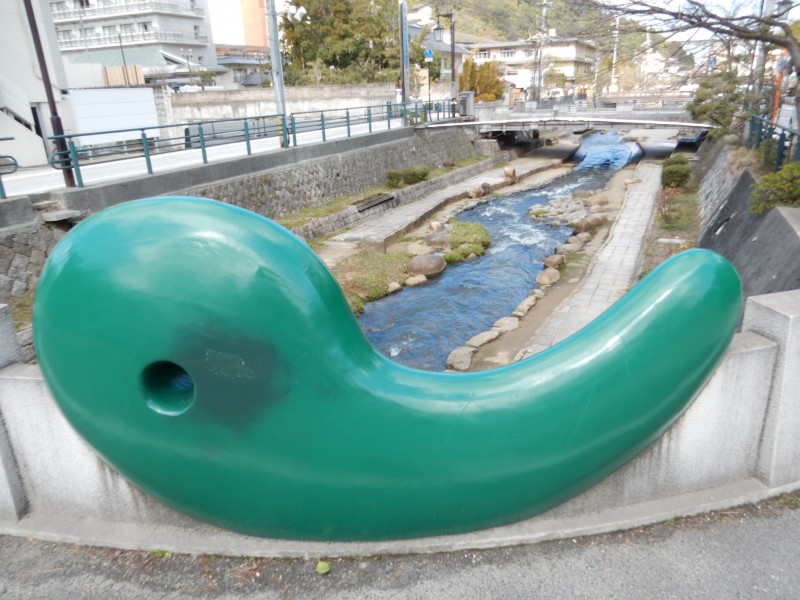
Tamatsukuri Onsen is a charming hot spring resort either side of a small stream and boasting ‘the biggest magatama in Japan’
Just outside Matsue City in Shimane Prefecture is the hot spring resort of Tamatsukuri Onsen. Tamatsukuri translates as Making Jewels, for it was at this place in ancient times that magatama were made. An actual site has been excavated with evidence of magatama production going back to Yayoi times, based on the agate in the surrounding hills.
The significance of the magatama is not well-known, though there are several theories about the jewellery beads. Some say it is a symbolic part of the yin-yang pairing, others that it represents strength through being shaped after a wild boar’s or mountain tiger’s tooth. My archaeological colleague at university was adamant it was a kind of hook for catching good luck.
Looking to exploit its magatama connections, the resort has adopted the theme of Izumo myths in order to provide interest to those who stroll along the small river. Statues illustrating ancient myths are placed at various points, and as well as celebrated Kojiki episodes such as Okuninushi and the Inaba Hare, there are lesser known local legends, to which noticeboards helpfully provide explanations.
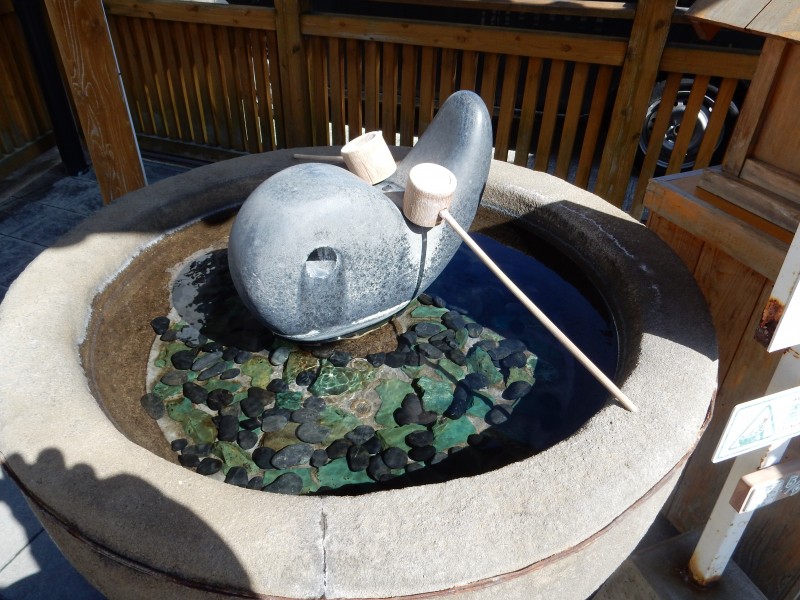
Magatama is the theme of the small resort, here featured in a magatama water basin
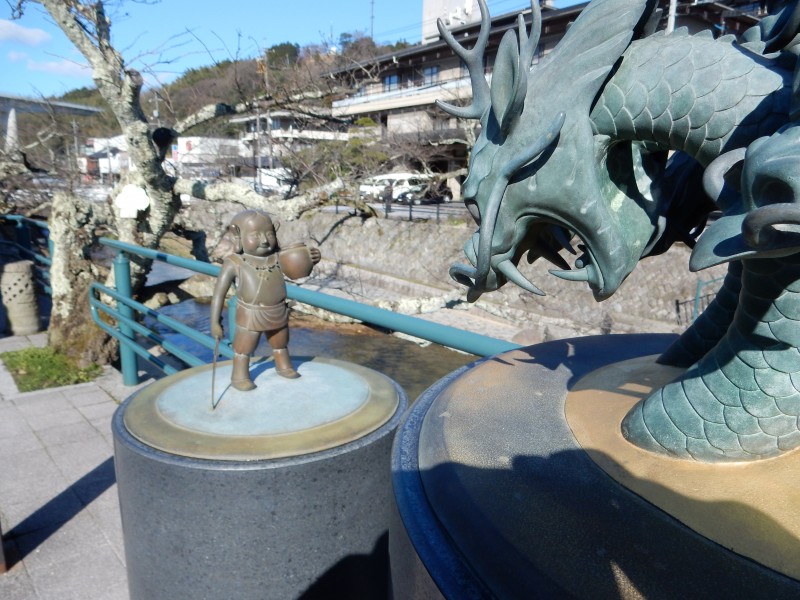
Susanoo no mikoto’s struggle with the fearsome eight-headed Orochi monster is one of the more familiar of the myths depicted in the hot spring resort. Susanoo’s victory enabled him to marry a local princess and take dominion of the land, presenting the sword he found in the monster’s tale to Amaterasu as a sign of fealty.
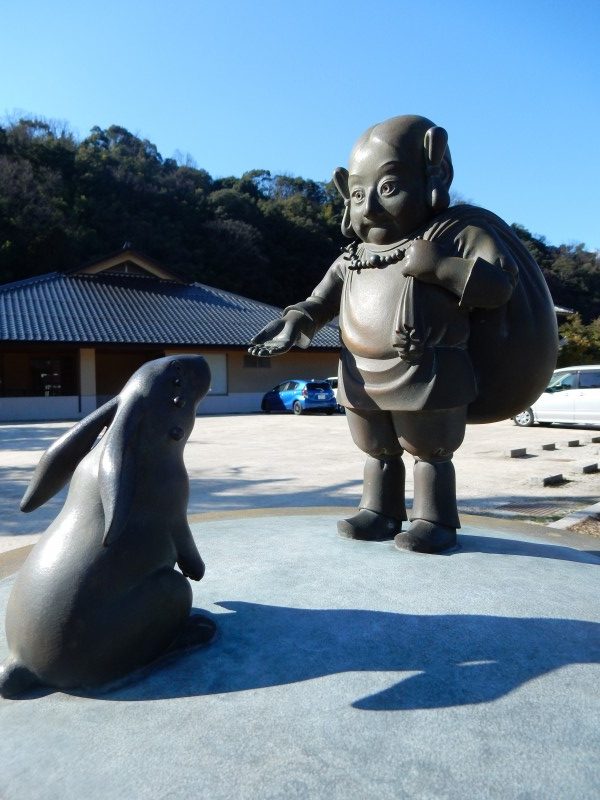
Okuninushi and the Inaba hare that he befriended is another well-known myth. Okuninushi took pity on the hare which had been bullied by his brothers by being told to bathe its flayed skin in the salt water of the sea.
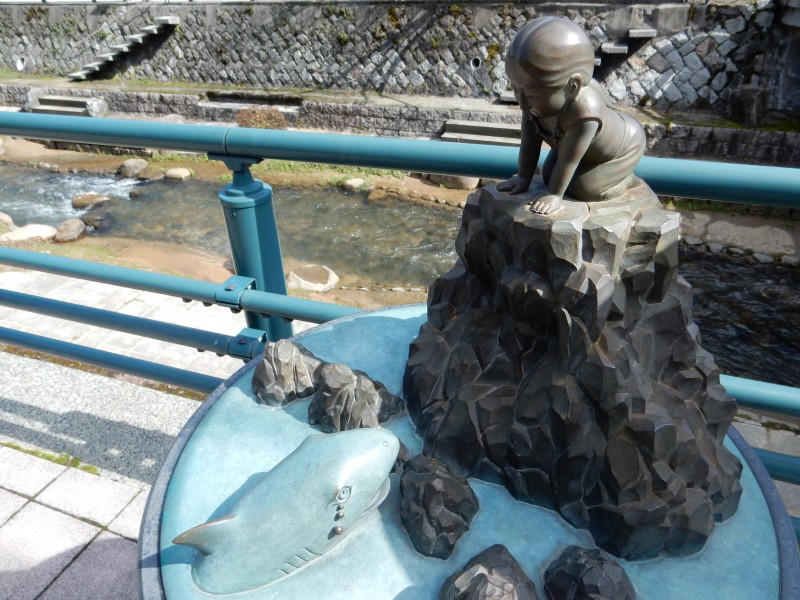
Not so well known is the tale of the shark which fell in love with the beautiful princess, Tamahime no mikoto, who put up a barrier of rocks in order to prevent his advances.
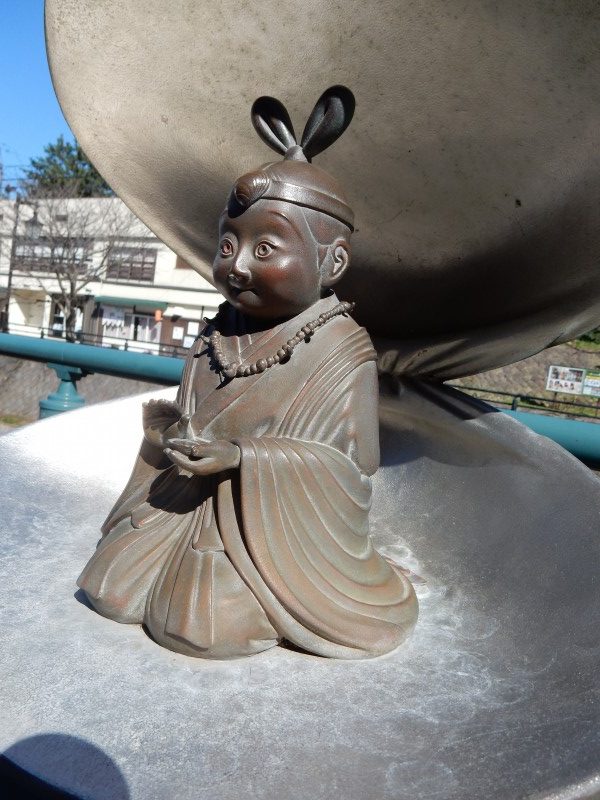
Once when Okuninushi had died and gone to the underworld of Ne no kuni, his mother interceded on his behalf and a couple of shell princesses, Kisagaihime and Umugaihime, brought him back to life.
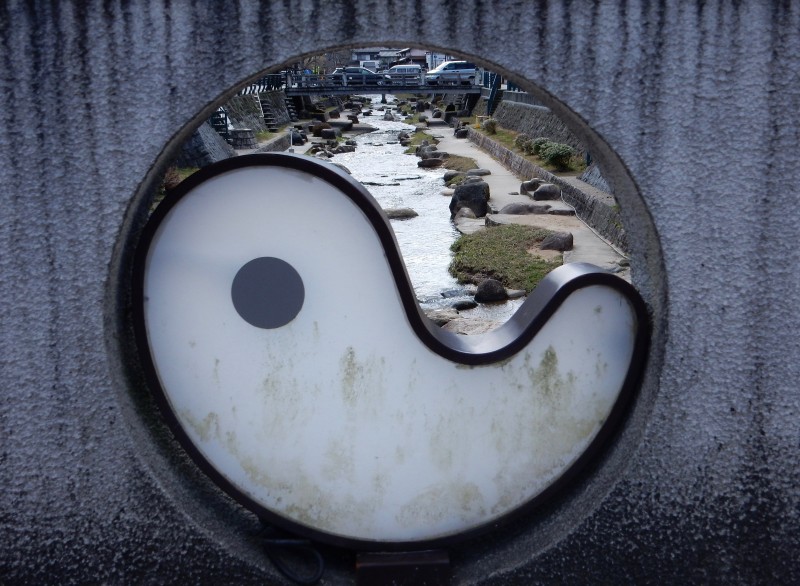
There were other myths to ‘soak in’, but by now the hot springs were calling and it was time to sweat over the deeper significance before taking a leisurely dinner-feast. Outside the magatama bridge spoke to the endlessly flowing sense of time and the deep connection one still feels in the Izumo region between ancient times and now.

Leave a Reply